You’ll transform any room into a vibrant oasis with strategic plant placement and thoughtful design elements. Indoor plants offer more than just aesthetic appeal; they purify air, reduce stress, and create natural focal points throughout your space. From dramatic living walls spanning 6-8 feet to compact corner clusters utilizing 3-4 complementary species, each placement technique maximizes visual impact while maintaining practical functionality. These nine professional decorating approaches will enhance your interior design strategy without overwhelming your space.

Contents
- 1 Create a Living Wall Statement
- 2 Style Multi-Level Plant Shelving
- 3 Design a Window Garden Display
- 4 Arrange Corner Plant Clusters
- 5 Highlight Architectural Features With Plants
- 6 Curate Plant-Focused Coffee Table Vignettes
- 7 Build Hanging Plant Compositions
- 8 Mix Plants With Functional Furniture
- 9 Layer Plants for Depth and Dimension
Create a Living Wall Statement
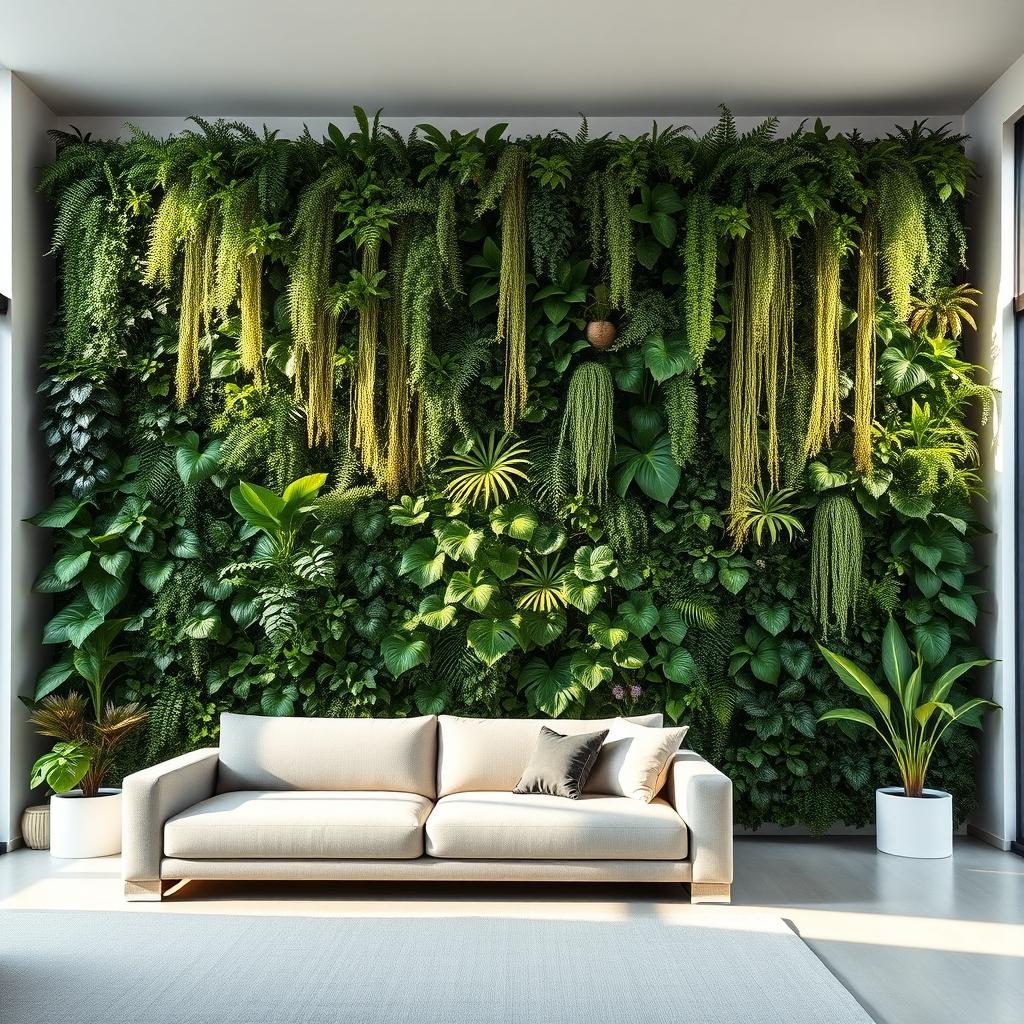
A living wall statement transforms an ordinary wall into a stunning vertical garden, featuring a dense arrangement of plants growing on a specially designed wall-mounted system.
This dramatic installation typically combines various plant species with different textures, colors, and sizes, creating a lush, three-dimensional tapestry of greenery.
The setup can include built-in irrigation systems, growing medium panels, and modular planting units that allow for easy maintenance and plant replacement.
Living walls serve as both natural art and an effective way to maximize plant display in limited floor space, while also improving air quality and adding a powerful biophilic element to interior design.
Style Multi-Level Plant Shelving
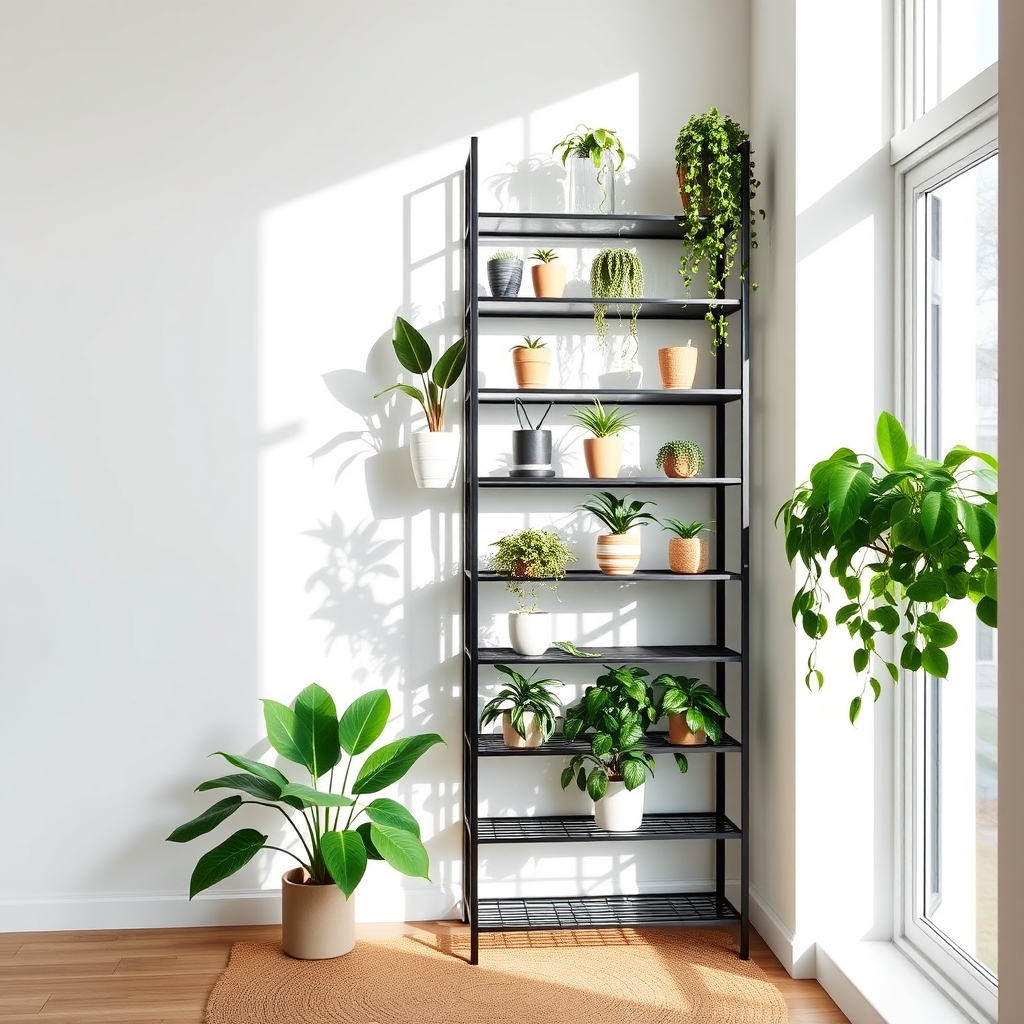
Multi-level plant shelving creates a dynamic vertical display of indoor plants using staggered platforms or graduated shelving units.
These arrangements typically feature multiple tiers or levels, allowing plants to be arranged at varying heights for visual interest and optimal light exposure.
The shelving can be wall-mounted, freestanding, or built into corners, often incorporating materials like wood, metal, or glass.
Plants are strategically placed with taller specimens on lower shelves and trailing varieties on upper levels to create a cascading effect.
This style maximizes floor space while creating an organized, aesthetic display that draws the eye upward and adds dimension to room decor.
Design a Window Garden Display
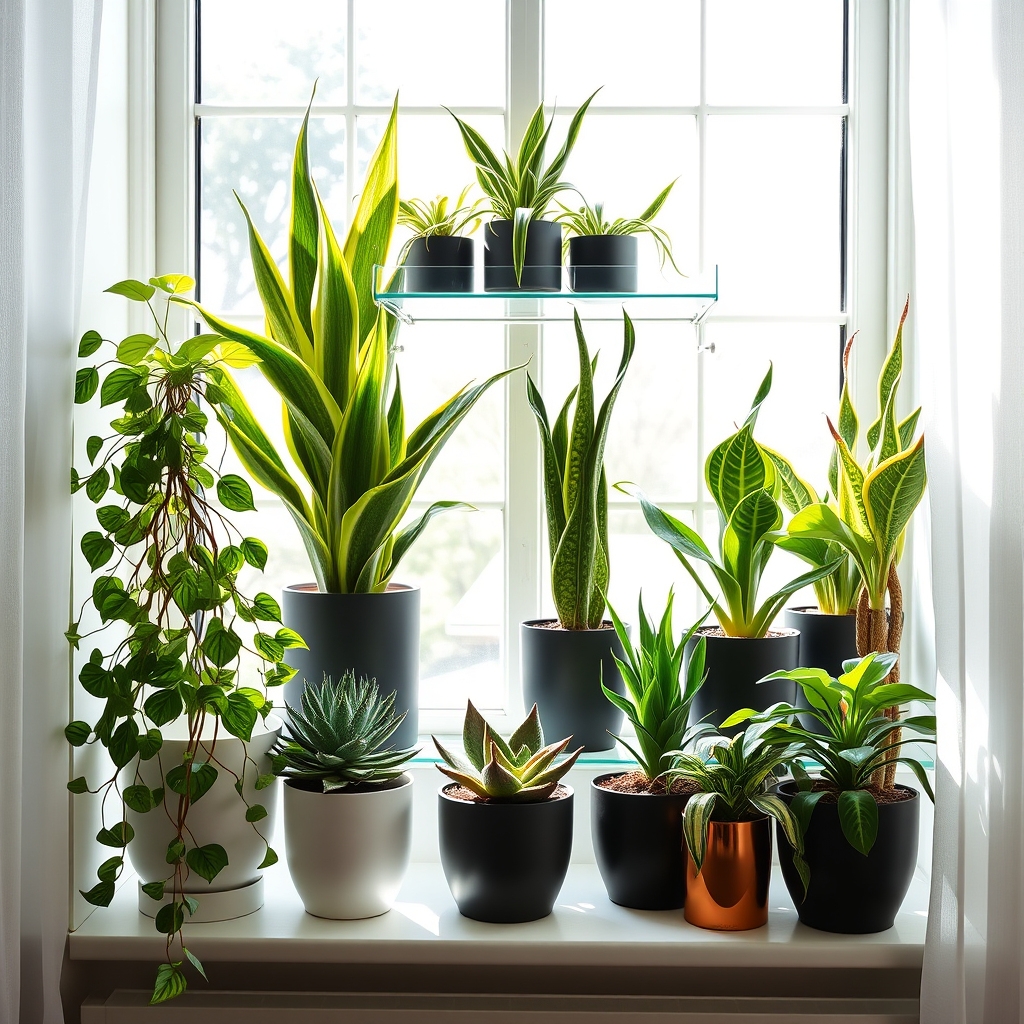
A window garden display transforms ordinary windowsills into vibrant botanical showcases.
Plants are arranged in graduated heights, with shorter specimens in front and taller ones behind, creating a layered effect that maximizes natural light exposure. The display typically features a mix of trailing plants like pothos or ivy hanging down, medium-height flora such as African violets or herbs in the middle, and upright plants like snake plants at the back.
Glass shelving or tiered plant stands can be incorporated to add vertical dimension. The arrangement takes advantage of natural window light while serving as a living curtain, adding privacy and visual interest both inside and outside the home.
Strategic placement of different pot sizes, colors, and materials adds artistic elements to the overall design.
Arrange Corner Plant Clusters

Corner plant clusters transform empty room corners into lush, dimensional focal points.
Plants of varying heights, textures, and sizes are grouped together, typically with taller specimens like fiddle leaf figs or palm plants positioned in the back, medium-sized plants in the middle, and smaller plants or trailing varieties in the front.
The arrangement creates visual depth through layering and can incorporate plant stands, pedestals, or shelves at different levels.
This styling technique maximizes vertical space while adding organic shapes and natural elements to otherwise unused corner areas.
Highlight Architectural Features With Plants
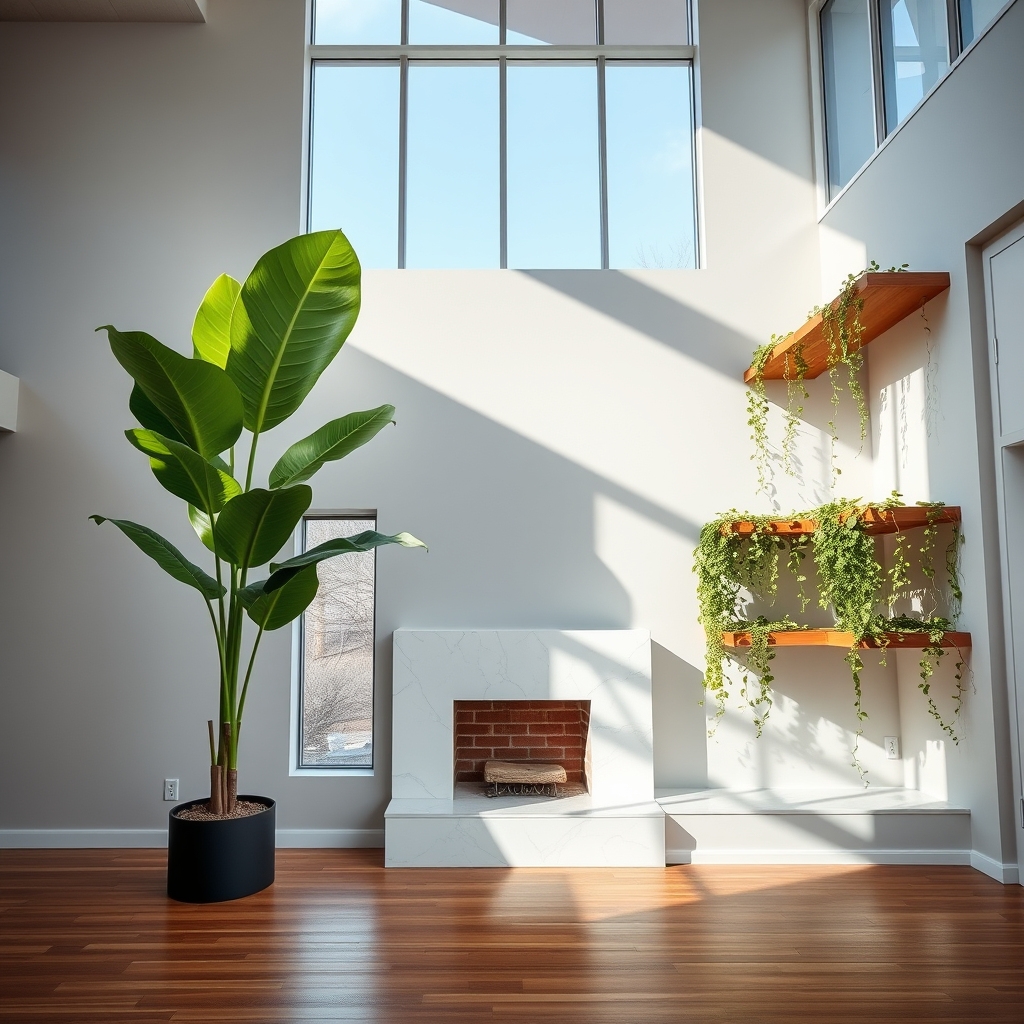
Strategic placement of plants can draw attention to and enhance a room’s architectural elements. Tall plants like fiddle leaf figs or bird of paradise can frame doorways and windows, while trailing plants like pothos or ivy can soften sharp corners or cascade down exposed beams.
Shelving units and built-in niches become focal points when adorned with carefully arranged plant collections. Window sills gain visual interest through small plant groupings that complement natural light sources.
Plants can also emphasize ceiling height when positioned near vertical architectural features or arranged on wall-mounted planters that follow structural lines.
Curate Plant-Focused Coffee Table Vignettes
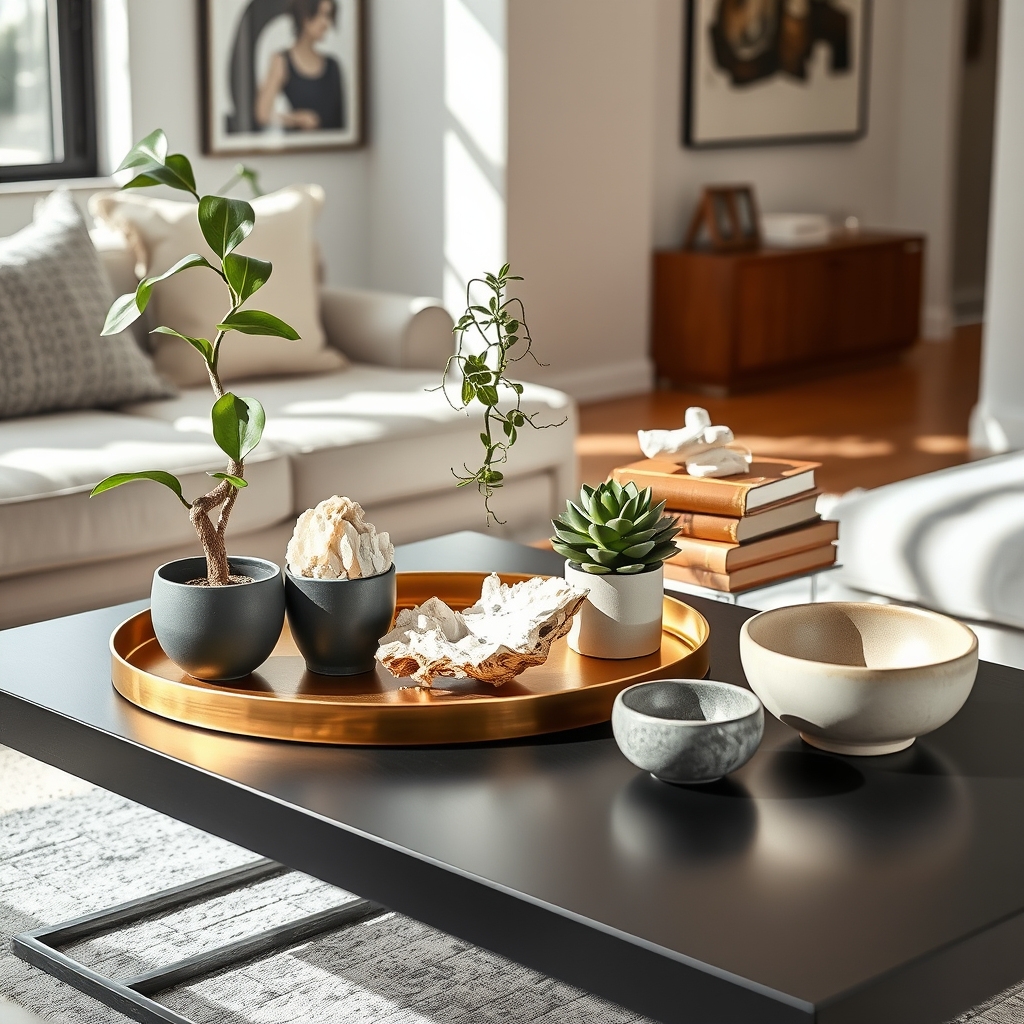
Plant-focused coffee table vignettes create artistic groupings where greenery serves as the centerpiece, surrounded by complementary decorative elements.
These arrangements typically feature a mix of plant heights and textures, with small potted succulents, trailing plants, or air plants displayed alongside design objects like coffee table books, ceramic vessels, or natural elements such as crystals or driftwood.
The vignettes are often arranged on decorative trays or directly on the table surface in asymmetrical clusters, following the rule of odds for visual interest.
Strategic placement ensures both aesthetic appeal and practical functionality, leaving space for beverages and maintaining clear sightlines across the room.
Build Hanging Plant Compositions
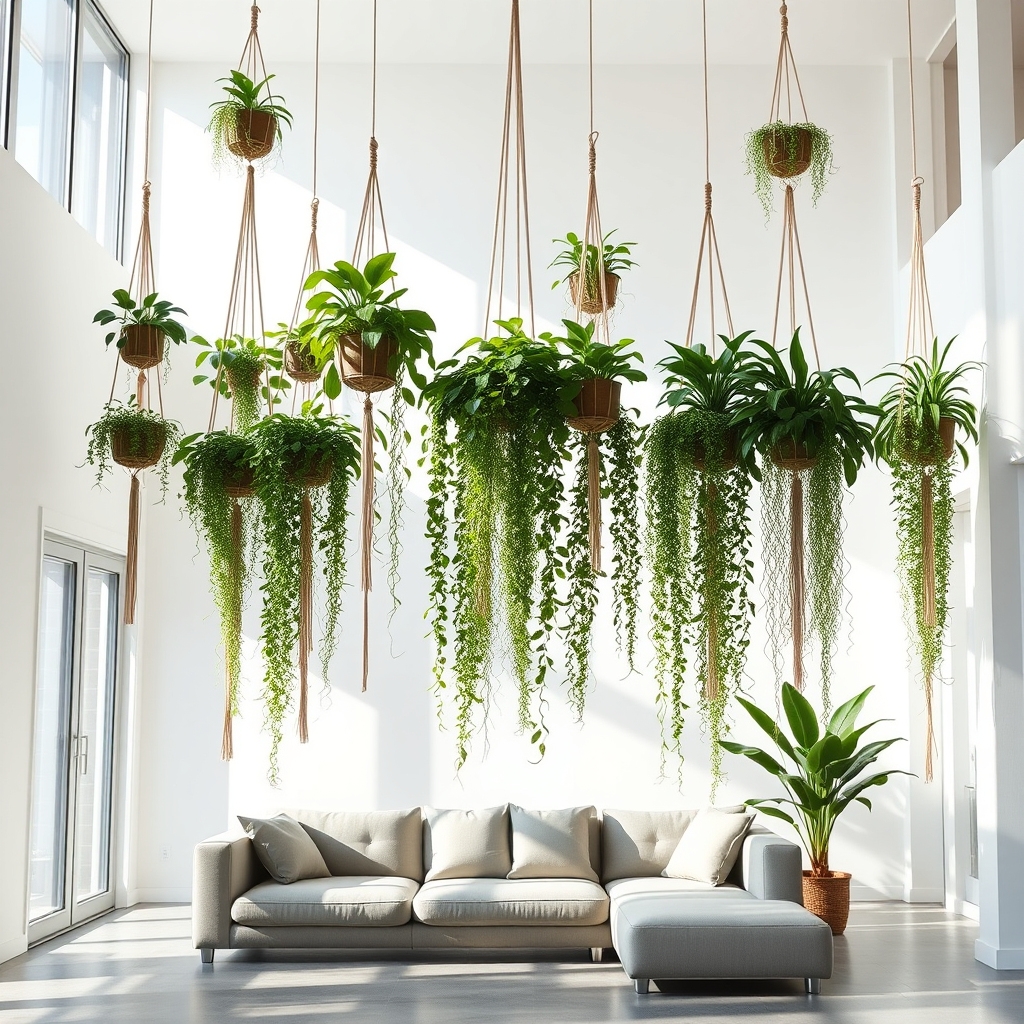
Building hanging plant compositions creates dynamic vertical gardens that draw the eye upward and maximize space usage.
These arrangements typically feature multiple plants suspended at varying heights from the ceiling, walls, or window frames using macramé holders, decorative chains, or sleek metal hooks.
Plants cascade downward in layers, creating a flowing, natural curtain effect that adds dimension to any room.
Common choices include trailing varieties like pothos, spider plants, and string of pearls, often mixed with different leaf shapes and textures for visual interest.
The unique feature of hanging compositions is their ability to transform unused vertical space into living art while keeping floor space clear and uncluttered.
Mix Plants With Functional Furniture
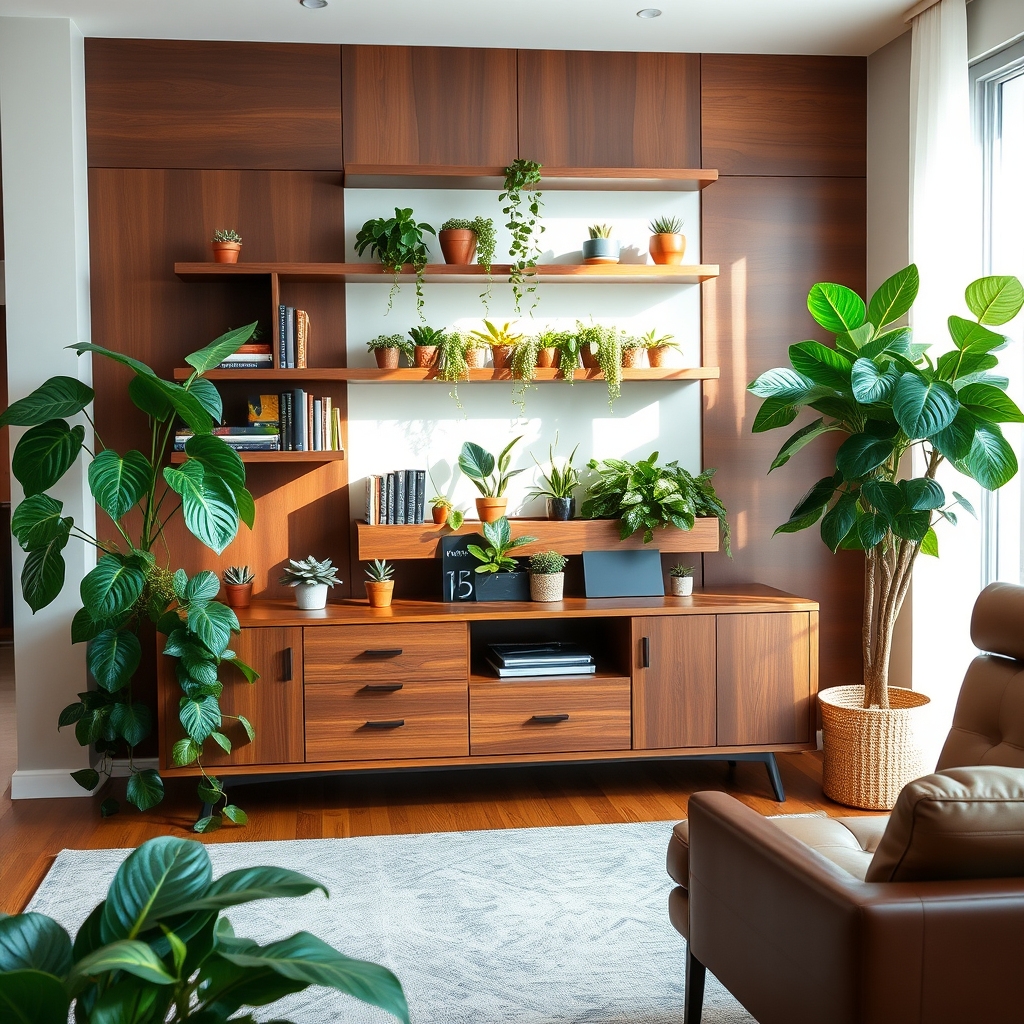
Mixing plants with functional furniture combines greenery with everyday furniture pieces to create dual-purpose arrangements.
Plants are strategically placed on, around, or integrated into useful furniture items like bookshelves, desks, coffee tables, or room dividers. Common configurations include trailing plants cascading from elevated shelving units, compact succulents adorning desk corners, or larger floor plants flanking entertainment centers.
The unique feature of this approach lies in its space-efficient design, where plants enhance furniture’s utility while adding natural elements to the room. For example, a ladder shelf can display both books and potted plants, while a wooden bench might incorporate built-in planters.
This style particularly suits urban living spaces where maximizing functionality is essential.
Key visual elements typically include:
- Multi-level display opportunities
- Varied plant heights and sizes
- Strategic placement for both aesthetics and accessibility
- Balanced distribution of greenery
- Integration with daily-use furniture pieces
Layer Plants for Depth and Dimension
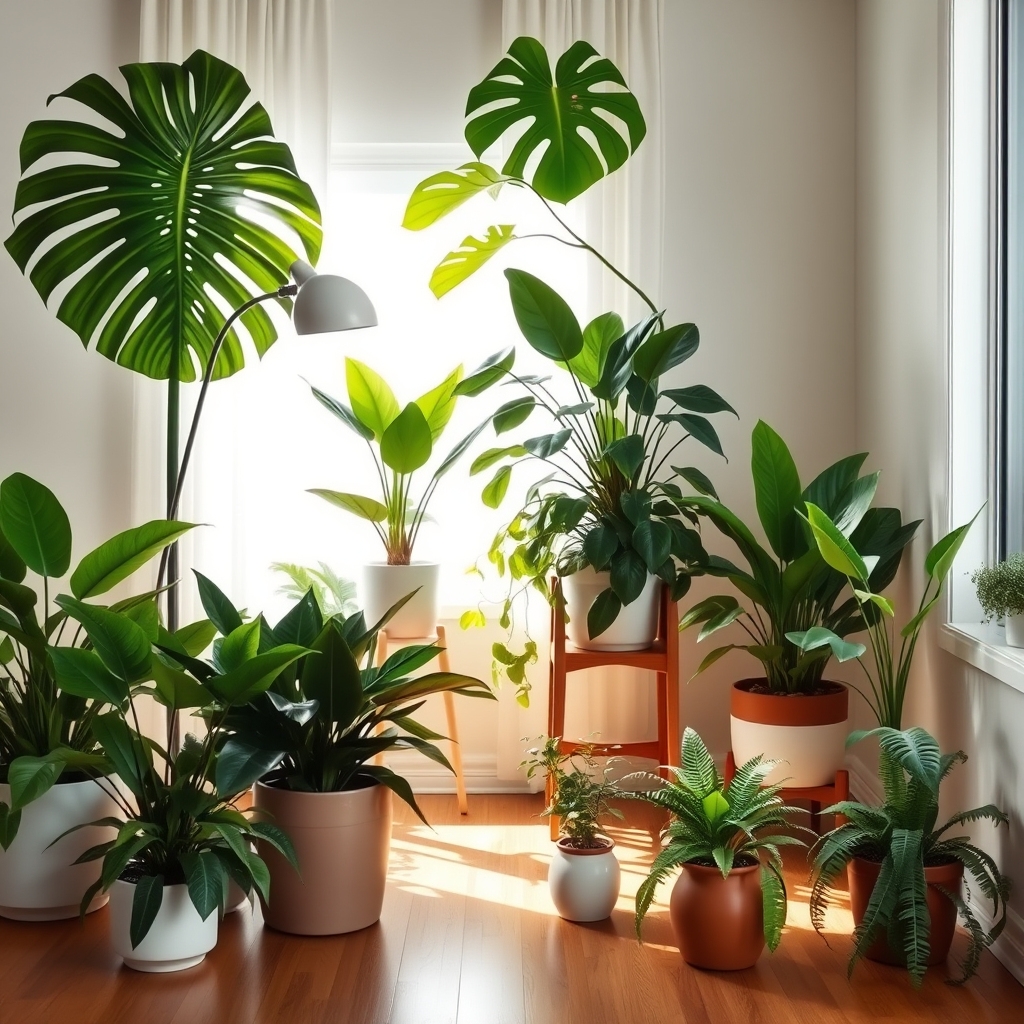
Layering plants creates visual interest and depth by arranging them at varying heights and distances from one another. This technique involves placing taller plants in the background, medium-sized plants in the middle, and shorter plants in the foreground.
The arrangement can include hanging plants, floor plants, tabletop specimens, and wall-mounted greenery to maximize vertical space. Plants with different leaf sizes, textures, and shapes contribute to a dynamic, multi-dimensional look that transforms a flat display into a lush, garden-like setting.
Strategic layering also allows each plant to receive adequate light while creating the appearance of a fuller, more abundant collection.
